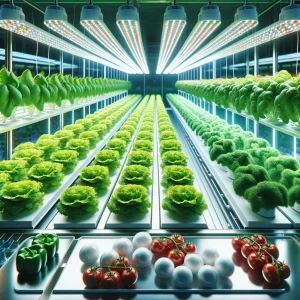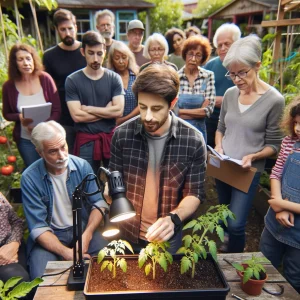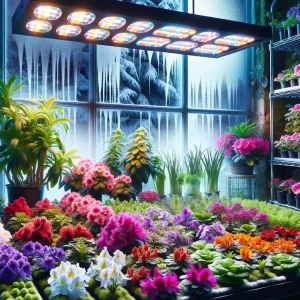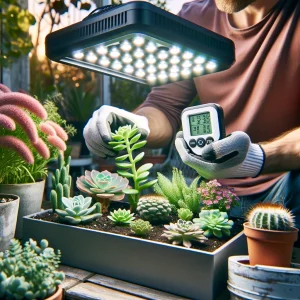Lighting plays a pivotal role in pursuing a lush, vibrant garden. LED growth lamps have emerged as a beacon of efficiency and effectiveness, particularly in nighttime maintenance. These lamps are not just a tool for extending the daylight hours for gardeners—they are a cornerstone of modern horticultural practices, enabling home gardeners and professional landscapers to optimize plant health and productivity.

Why Choose LED Growth Lamps?
LED (Light-Emitting Diode) technology has revolutionized garden lighting by offering a spectrum of light tailored to plants’ needs. These lamps consume less energy and have a longer lifespan than traditional growth lamps, such as HID (High-Intensity Discharge) or fluorescent bulbs. By using LEDs, gardeners can reduce their energy bills and minimize lamp replacement costs, making LED growth lamps a sustainable choice for the environmentally conscious.
Comparing LEDs to Traditional Lamps
When compared to traditional growth lamps, LEDs stand out in several areas:
- Energy Efficiency: LEDs typically use 40-60% less electricity than conventional growth lamps.
- Targeted Spectrum Ranges: LED lamps can be engineered to emit specific light spectrums, which are optimal for photosynthesis and can accelerate plant growth without wasting energy.
- Reduced Heat Output: LEDs emit very little heat compared to HID lamps, reducing the risk of plant burn and the need for additional cooling systems in indoor setups.

Case Studies: LED Growth Lamps in Action
Several case studies have highlighted the effectiveness of LED growth lamps in various environments:
- Indoor Vegetable Farms: Urban farmers have successfully used LED lamps to grow vegetables like lettuce and tomatoes year-round, achieving faster growth cycles and increased yields.
- Ornamental Plant Nurseries: Nurseries cultivating ornamental plants have observed more vibrant colours and healthier plants under LED lighting, especially during winter when natural light is scarce.
Optimizing Your Growth Lamp Setup
To make the most out of LED growth lamps, consider the following tips:
- Placement and Spacing: Ensure lamps are evenly spaced to distribute uniform light. Adjust the height of the lamps as plants grow to maintain optimal light exposure.
- Timing: Automate your lighting with timers to mimic natural daylight cycles, which can help regulate plant growth phases.
- Monitoring: Regularly check your plants for signs of light stress or underexposure and adjust the lighting setup accordingly.
Technical Specifications to Consider
When selecting an LED growth lamp, key specifications to consider include:
- Wattage: Indicates the lamp’s energy usage. Higher-wattage lamps are more assertive but may only sometimes be necessary depending on the plant type and setup.
- PAR (Photosynthetically Active Radiation) Value: This value measures the usability of the light emitted by the lamp for photosynthesis. Higher PAR values usually translate to better growth outcomes.

The Future of Garden Lighting
As technology advances, LED growth lamps evolve, becoming more efficient and tailored to specific types of plants and growth conditions. With the ongoing research into plant-specific light requirements and LED technology, the future of garden lighting looks bright.
Incorporating LED growth lamps into your gardening practices supports plant health and productivity and contributes to a more sustainable and cost-effective approach. Whether you’re tending to a small home garden or managing a large-scale landscaping project, LED growth lamps are a wise investment in the future of your green endeavours.

